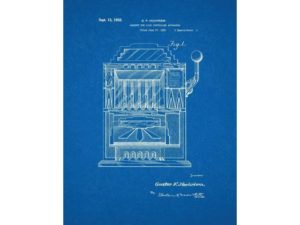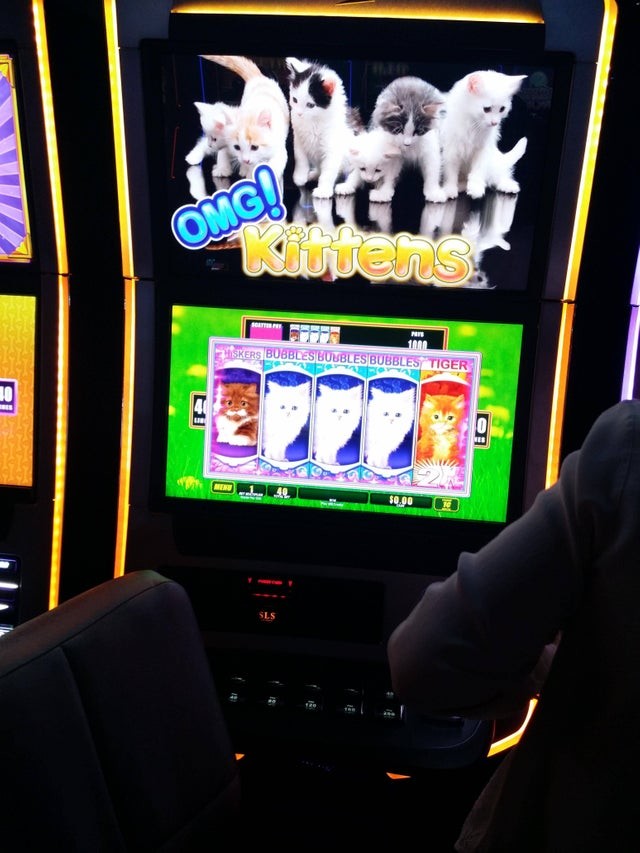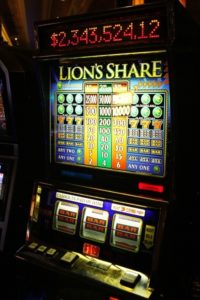
 The first thing to understand about modern slot machines, regardless of whether they are the electro-mechanical type, with physical reels, or the video type, with virtual reels, is that the outcome of each spin depends on random number generator (RNG). An RNG consists of highly complex computer instructions, technically known as an ‘algorithm’. By definition, it cannot reproduce randomness exactly, but does a highly passable imitation. Consequently, the outcome of each spin is, effectively, random and independent of anything that comes before, or after, in a series of spins.
The first thing to understand about modern slot machines, regardless of whether they are the electro-mechanical type, with physical reels, or the video type, with virtual reels, is that the outcome of each spin depends on random number generator (RNG). An RNG consists of highly complex computer instructions, technically known as an ‘algorithm’. By definition, it cannot reproduce randomness exactly, but does a highly passable imitation. Consequently, the outcome of each spin is, effectively, random and independent of anything that comes before, or after, in a series of spins.
The advent of virtual, rather than physical, reels means that the need for mapping symbols and spaces on the physical reels to virtual reels no longer exists. Of course, a virtual reel is not a physical entity, so a reel with 64, 128 or 256 symbols takes up no more physical space than a reel with, say, 32 symbols. Consequently, programmers can simply program virtual reels with a sufficient symbols and spaces to dramatically increase the number of possible outcomes – and, hence, the value of jackpot prizes – without worrying about the physical constraints of a slot machine cabinet.
Nevertheless, when a player pushes the button to set the reels in motion, the RNG instantaneously generates a random number corresponding to a ‘stop’ position on each reel. Unsurprisingly, each reel stops at the position dictated by the RNG and the resulting symbols indicate to the player whether it was a winning or losing spin. However, as far as the ‘real’ game is concerned, the visible reels are something of an irrelevancy; spinning reels may create a sense of anticipation and excitement but, otherwise, exist only to inform the player of the outcome of a spin. By the time the reels are spinning, the RNG has already done its work and the outcome of the spin is already determined; what happens on the video screen thereafter has no effect, whatsoever, on the game.


 Despite being an archaic, mechanical, three-reel slot machine dating from the Nineties, prior to August, 2014, the aptly-named ‘Lion’s Share’ was the most famous and popular attraction at the MGM Grand on the Las Vegas Strip. In fact, so famous was it that it featured in a piece in the ‘Wall Street Journal’, which boosted its popularity still further.
Despite being an archaic, mechanical, three-reel slot machine dating from the Nineties, prior to August, 2014, the aptly-named ‘Lion’s Share’ was the most famous and popular attraction at the MGM Grand on the Las Vegas Strip. In fact, so famous was it that it featured in a piece in the ‘Wall Street Journal’, which boosted its popularity still further.
In its heyday, the ‘Lion’s Share’ was played once every five seconds or so, day in, day out – that is, five times more often than the average game on the casino floor at the MGM Grand – and regularly attracted queues of eager gamblers. Paradoxically, the interest in the ‘Lion’s Share’ stemmed from its extreme frugality, at least with regard to its progressive jackpot, which accumulated over a period of two decades or more to an impressive $2.4 million.
In any event, the most enduring slot machine jackpot in Las Vegas was finally won by New Hampshire couple Walter and Linda Misco on August 24, 2014. Apparently, the Miscos had been playing the $1 three-coin machine for just five minutes when they lined up three green lion symbols on the pay line, thereby hastening its retirement. The ‘Lion’s Share’, which was believed to have been on the casino floor since 1993, was the only slot machine of its era remaining in the MGM Grand and only lasted as long as it did because the money accumulated in the progressive jackpot had to be won or, possibly, transferred to another machine.
